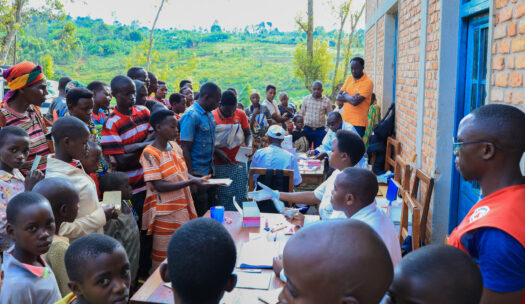
We sat down with Darlene Irby, our new Executive Director of Digital Health, to learn more about her and her new role at Pathfinder.
What most excites you about your new role at Pathfinder?
I am most excited about joining Pathfinder because of its strong reputation in sexual and reproductive health and rights (SRHR), and its forward thinking and mission-focused leadership. Pathfinder is committed to more inclusive development through an organizational structure that is country-led, equitable, and impactful.
From a digital health perspective, Pathfinder prioritizes digital health and innovation, and this newly created role will allow me to work for an organization that I have long admired, while playing a pivotal role in shaping its future. Part of my responsibility at Pathfinder will be to serve as the strategic thought partner on all digital programs, technology, data, and innovation, allowing me to lead the organizational digital strategy.
Digital health encompasses a broad range of approaches, technologies, and solutions. If you had to briefly explain what digital health is to someone who had never heard of it, what would you say?
As you can imagine, there are many definitions that come to mind. I think the key thing to remember is that digital health technologies are both disruptive and transformational.
As for definitions, I often reference the World Health Organization for accuracy: “Digital health is the systematic application of information and communications technologies, computer science, and data to support informed decision-making by individuals, the health workforce, and health institutions, to strengthen resilience to disease and improve health and wellness for all.” But I turn to the Health Information Management and Systems Society for simplicity: “Digital health connects and empowers people and populations to manage health and wellness.”
Why is digital health so essential to advancing sexual and reproductive health and rights in the countries where work?
Health care is increasingly delivered through digital technologies, such as mobile apps, social media, telehealth, and telemedicine. Digital technology offers great potential for enhancing the delivery of SRHR services; for example, by sharing and providing information, supporting self-care and diagnostics through algorithms and artificial intelligence, and monitoring and tracking services. Technology-based social and behavior change programs can deliver information virtually, allowing for customization and personalized functionalities, and technology that augments reality can facilitate immersive SRHR training and sensitization. Digital technology provides a unique opportunity to deliver information and services, generate demand, and change behavior.
Because SRHR services are sensitive and require confidentiality, however, we must be sure that we are careful and coordinated in our deployment of digital health tools and that our approaches are guided by the following principles: scale, sustainability, equity, quality, gender-transformative, rights-based, and people-centered. At Pathfinder, we adhere to these guiding principles, allowing us to support digital tools that are grounded in indigenous knowledge and responsive to the needs of the communities we serve.

What are some of the biggest challenges to scaling up successful digital health solutions?
We are often said to be living through a Fourth Industrial Revolution marked by exponential growth in technological advancements over the last several decades. But this exponential growth in technological advancements is unevenly distributed, and it is coupled with growing demands for more and more information.
International development organizations continue to struggle with working in digital health environments that are siloed and vertical. Our lack of integration and poor focus on data architecture has really limited our progress in consistently designing and implementing effective public health programs.
Another major challenge is equity—in terms of access to and uptake of technological advancements. For example, there is significant interest using artificial intelligence, machine learning, and other advanced statistical models. The advanced techniques, if used properly, can drive health improvements, support treatment protocols, modify drug and treatment regimens based on genomic modeling, and provide sophisticated data models and visualization supporting improved disease surveillance. But how do we ensure that these models don’t create or support further bias or digital subjugation, and at the same time, encourage innovation?
What are your biggest dreams for the digital health field over the next decade?
I started this journey in the digital health field over 17 years ago, and as I reflect on my travels across many countries—Kenya, India, Mozambique, Tanzania, Uganda, Zambia, to name a few—I realize that the digital transformation has already begun. My biggest dream is that international development organizations offering digital health solutions truly learn to partner and learn from the communities they serve. I envision a future, where women and children, no matter where they are born, will be able to access the health and education that they need, and that digital technology plays a key role in their futures.


